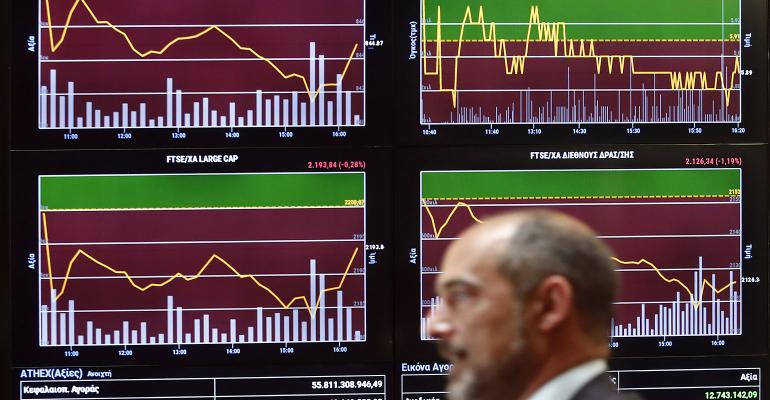By Jeff Ingraham
International small-cap equities represent one of the more attractive investment opportunities in today's market environment. In our view, international small-cap equities could stand alone as the only international-equity exposure investors need in their portfolio to achieve the return potential and diversification benefits that non-U.S. equities can offer. Advisors and retirement-plan sponsors can play an important role in helping investors achieve greater exposure to international small-cap equities, an asset class that is relatively underinvested or overlooked in most investor portfolios today.
The most important inputs that go into model-portfolio or investment-menu design are risk, return and diversification (i.e., correlation). Plan sponsors and advisors often cite the risk profile, return potential and diversification benefits as rationale for why a certain asset class is offered or included in an investment lineup. As we look across each of these factors, it’s evident international small-cap equities are deserving of a more prominent allocation in portfolios.
1. Risk
The perceived "riskiness" of international small-cap equities is a common misconception and one that has likely contributed to a lack of investor exposure to this asset class.
Relative to other asset classes, historically, the realized volatility of international small-cap equities has been significantly lower than both domestic small-cap and emerging-market equities. It’s also comparable to that of international large-cap equities. These other asset classes, however, are utilized quite frequently in many investment models and retirement-plan menus. The concern that an investor might allocate all of their assets into a "risky" asset class like international small-cap equities carries less weight when riskier asset classes like domestic small-cap or emerging-market equities are also available.
Another way to assess the relative riskiness of international small-cap equities is to analyze how this segment of the market performs in relation to the broader non-U.S. equity markets. International small-cap equities represent approximately 13 percent of the international equity markets, larger companies comprise roughly 85 percent of the investable market cap, and the remaining 1 percent is represented by extremely small companies ("micro cap") outside the scope of interest for most investors. Looking at the last 20 years, in months in which the broader international equity markets were positive, international small-cap equities captured approximately 101 percent of the "up" market return. In months in which broad international equities generated a negative return, international small-cap equities captured only 94 percent of the "down" market performance. This type of up/down market capture helps to support the argument for a large, strategic allocation to international small-cap equities, as the profile is both desirable (capturing all of the positive market-return potential) and efficient (up capture > down capture).
To compare, the same analysis applied to the domestic equity market paints a very different picture. The "up" capture of domestic small-cap equities is a very attractive 118 percent. However, in months in which broader U.S. equity-market returns were negative, domestic small-cap equities captured 122 percent of the "down" market performance. This type of risk profile suggests an investor needs to rely more on market timing, as higher returns are certainly available if markets are generating a positive return, but the inefficiency of the capture ratio (down capture > up capture) means an investor risks experiencing significantly higher losses if market returns are negative.
2. Return
Investors of all ages should have access to investment options offering the potential to grow their investments over time to outpace inflation and meet future spending needs. The return potential of an asset class is one of the most important components of effective portfolio and investment-menu design.
International small-cap equities have outperformed international large-cap equities across every relevant trailing time period over the last 20 years, and have outperformed the S&P 500 on an annualized basis over the last 15 years as well. The performance of international small-cap equities has also been rather consistent over time, with the asset class outperforming international large-cap equities in 13 out of the past 20 calendar years, including four of the last five years.
From a growth perspective, international small-cap companies are expected to increase their earnings significantly faster than all other domestic and international equity markets over the next five years. In addition to positive growth expectations, this asset class is also aided by the fact that international small-cap equities trade at cheaper valuations today than broad domestic and international large-cap equity markets.
3. Diversification
International small-cap equities have consistently maintained a lower correlation to domestic equities than international large-cap equities, providing investors with the diversification benefit investors seek and expect when investing in non-U.S. companies.
Increasing globalization has meant the largest international companies are exposed to the same markets, trends, opportunities and challenges as their domestic counterparts, with the end result being significantly higher correlations between international and domestic large-cap equities over the past two decades. The nature of smaller companies suggests many of them are singularly exposed to their home country or region, but the vast size of the market and inclusion of more than 45 countries, both developed and emerging, allows for greater diversification potential through true exposure to the varying political, economic and demographic cycles of international markets.
Despite common misconceptions about international small-cap equities, this asset class offers investors unique benefits all plan sponsors and advisors should look for when constructing an investment-menu lineup. As presented, this asset class has historically generated higher returns, better risk-adjusted returns with favorable risk-profile characteristics, and can provide increased diversification potential for investors.
Jeff Ingraham is a Portfolio Strategist at Manning & Napier.





